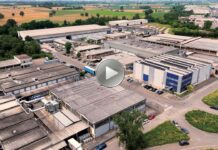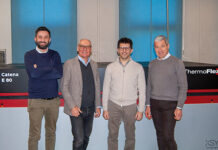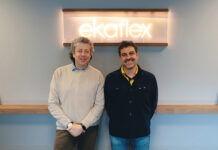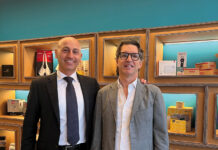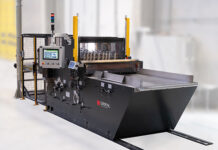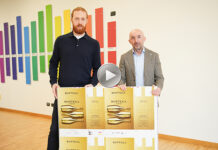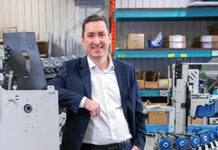By Pedro Hernandez, Engineering Manager, Asahi Photoproduct

At Asahi Photoproducts, we were thrilled to see the Comexi Turnkey Project come to fruition. It was designed to demonstrate how simple and clean the flexo platemaking process can be, making it easier than ever for flexographic print houses to bring platemaking in house, gaining control over the process and saving valuable time.
To facilitate the project, an AWP™ 4835-P water-washable plate processor was installed at the Comexi Manel Xifra Boada Technology Center in Girona, Spain.
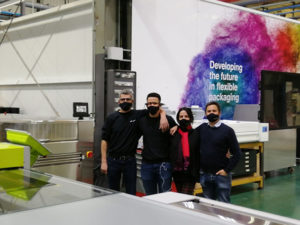 What was unique about the installation was the fact that it was the first-ever installation done remotely with Smart Glass support! This approach was driven by pandemic-imposed travel restrictions, forcing a decision to either delay the project or utilize alternative technologies to start up the system. The fact that Comexi had already experienced Smart Glass technology as part of their service offering significantly helped make the process smooth between both companies and resulted in defining our standard remote support operating procedures which can be used for future installations, saving time, eliminating the need for travel, and providing an overall more effective experience for the operators at the installation site.
What was unique about the installation was the fact that it was the first-ever installation done remotely with Smart Glass support! This approach was driven by pandemic-imposed travel restrictions, forcing a decision to either delay the project or utilize alternative technologies to start up the system. The fact that Comexi had already experienced Smart Glass technology as part of their service offering significantly helped make the process smooth between both companies and resulted in defining our standard remote support operating procedures which can be used for future installations, saving time, eliminating the need for travel, and providing an overall more effective experience for the operators at the installation site.
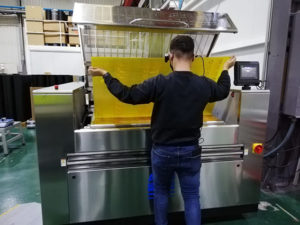 “The Smart Glass installation was great! Everything was well prepared, and it went smoothly from the very beginning,” says Yago Lulin, Technical Consultant & Prepress Manager at Comexi. He continues by saying, “The installation was done in a few days, and the Comexi team was given a subsequent training on platemaking in detail. Smart Glass support for this type of activity is ideal as it provides flexibility regarding the installation date when it comes to any last minute changes, but it also saves 2-3 days of engineering travel time and costs”.
“The Smart Glass installation was great! Everything was well prepared, and it went smoothly from the very beginning,” says Yago Lulin, Technical Consultant & Prepress Manager at Comexi. He continues by saying, “The installation was done in a few days, and the Comexi team was given a subsequent training on platemaking in detail. Smart Glass support for this type of activity is ideal as it provides flexibility regarding the installation date when it comes to any last minute changes, but it also saves 2-3 days of engineering travel time and costs”.
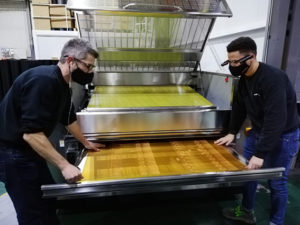 We see this approach as a major advance for the “next normal”. While Asahi Photoproducts’ expert technical team is always available to come on site to help with technical or training issues, being able to remotely do a full installation using modern communications technologies means a more cost-efficient and timely approach to many of the activities that normally would have required the time and travel cost associated with conventional technical support approaches. This was a great learning experience for both teams, and proof that it is a viable approach for the future.
We see this approach as a major advance for the “next normal”. While Asahi Photoproducts’ expert technical team is always available to come on site to help with technical or training issues, being able to remotely do a full installation using modern communications technologies means a more cost-efficient and timely approach to many of the activities that normally would have required the time and travel cost associated with conventional technical support approaches. This was a great learning experience for both teams, and proof that it is a viable approach for the future.
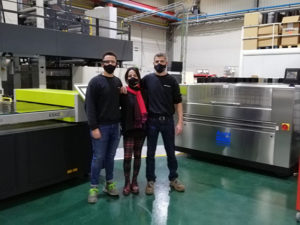 Another important advantage noted by Yago Lulin was the fact that by its very nature, the process gave staff more hands-on experience with the equipment than they might have had during a normal on-site installation. He adds: “All members who participated in the installation were really motivated to learn how the processor works, both for operation and for future maintenance. This approach is ideal for this type of installation!”
Another important advantage noted by Yago Lulin was the fact that by its very nature, the process gave staff more hands-on experience with the equipment than they might have had during a normal on-site installation. He adds: “All members who participated in the installation were really motivated to learn how the processor works, both for operation and for future maintenance. This approach is ideal for this type of installation!”




